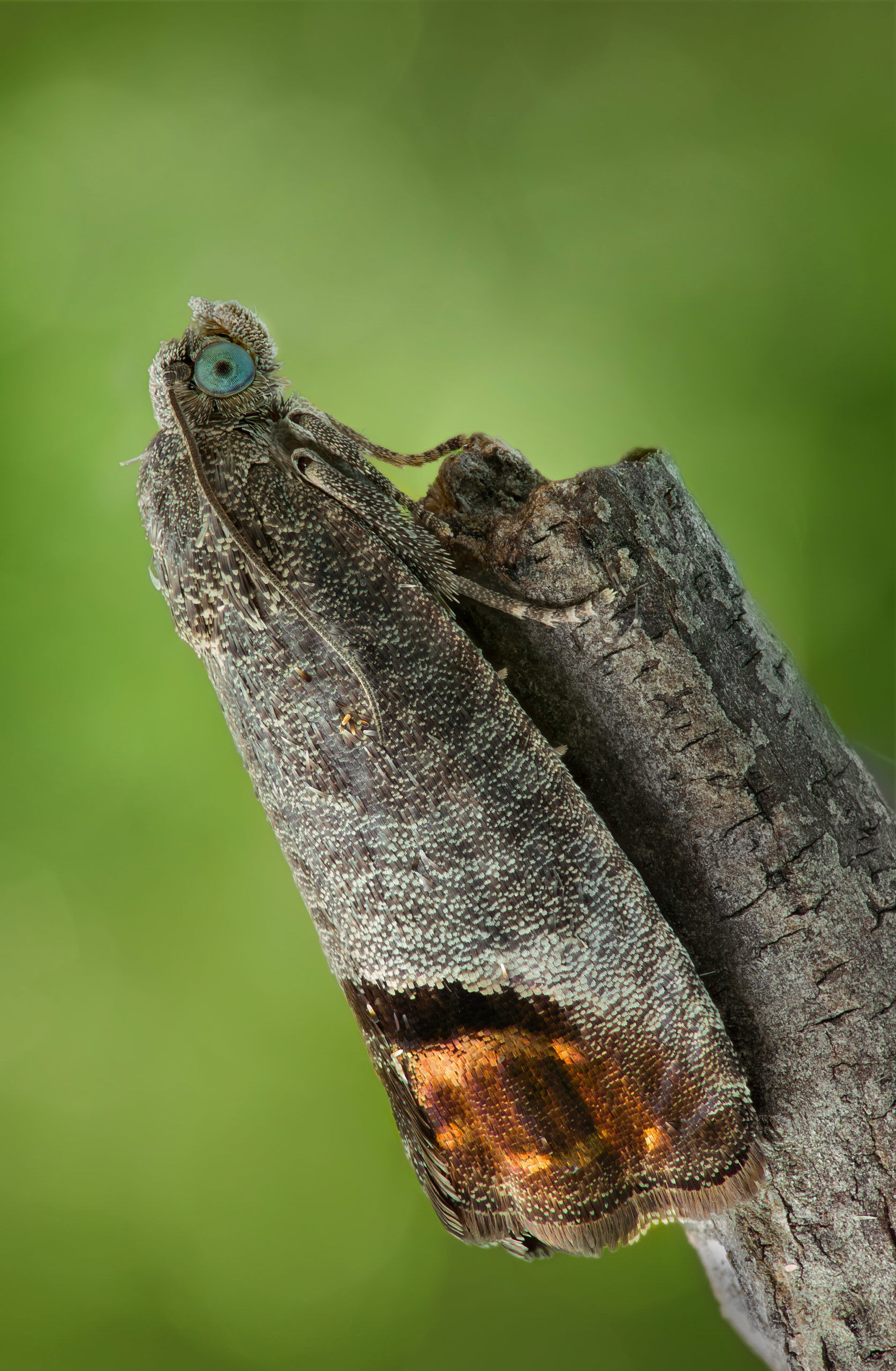Codling moth
Various fruits but mainly apples
The female moth lays a single egg on fruit, leaf, or stem at night. After hatching, the larvae enter the end or side of the calyx of the fruit and dig to the center. The color of the larva is pink to white, the head is brown, and it can reach one inch in length. The development of the larvae is completed within 3 to 5 weeks. The larvae leave the fruit and settle in the thick silk cocoons on the bark or other protected areas. The adult is about half an inch, gray, with a clear bronze area at the bottom of the wing.
Codling moth larvae are one of the most destructive pests. Although it can attack various fruits, it mainly damages apples. This is the main pest of apples and needs to be managed in each orchard.
Orchards should be scouted twice a week early in the season and once a week later on.
Monitoring: Use pheromone traps to attract male moths. Traps are made of plastic to create a passage and the bait is placed inside. The inner surface of the bottom is coated with a sticky material to hold insects when they fall into the trap. The traps are hung in on the tree at eye level, one for every two acres of trees. It should be installed before the pink stage of apple bud development and checked every day. A total of five moths captured in the trap is the threshold to set the biofix, this is the day in which growing degree days should start counted. This will be used to predict when egg hatching will occur and to time pesticide application optimally. This usually happens after the petals fall.
Sanitation: Growers should pick up and destroy the fallen fruit. Usually, fruits that fall prematurely may be infested by apple moths.
Mating disruption: spread 20 disruptors every 100 acres.
The following are insecticides used in one or more parts of the world: chlorantraniliprole, acetamiprid, spinetoram, pyriproxyfen and cyantraniliprole.
Horticultural oil and spinosad
The wasps Trichogramma sp. and Ascogaster quadridentata
*Names marked in red are considered to be highly poisonous to beneficial insects.
*Names marked in green are considered to be organic and IPM (integrated pest management) compatible.
Image Gallery


